
A brief history of the Scarborough RT
The SRT, the monorail-like spur from the Bloor-Danforth line to the heart of Scarborough Centre, has always felt orphaned from the rest of Toronto's rapid transit network. Conceived in the early 70s as a way of tying the new heart of Metro's eastern borough to downtown Toronto, the LRT line never truly realized its potential.
When it was completed in 1985, the driverless, centrally-controlled trains were part of the most advanced urban transit line in North America, one that the province hoped would be purchased and installed in cities around the world.
Now, less than 30 years from its opening day, city council has decided (for now) to replace the line with a subway extension. Here's how Scarborough got light rail, rode it for decades, then decided it wanted a subway instead.
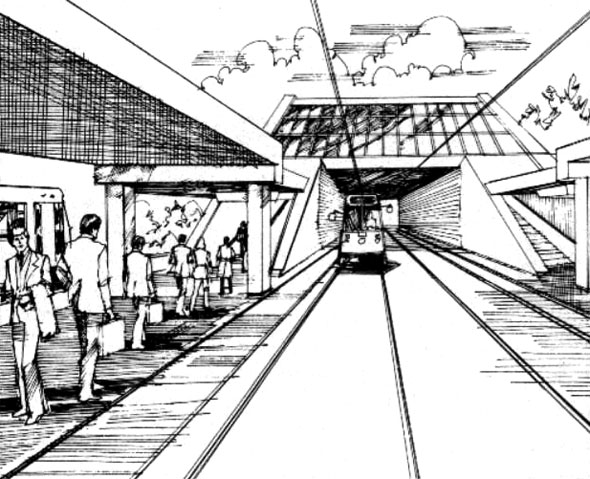
Scarborough's light rail line started life as a planned streetcar route that would connect the under-construction Kennedy station at the end of the Bloor-Danforth line to Scarborough Town Centre via a dedicated right of way, short tunnel, and concrete section of elevated track.
As approved by Metro Toronto and the Ontario Municipal Board in 1977, the $108.7 million capital cost of the line would be split 75-25 between the province and Metro. Ontario also agreed to kick in an additional subsidy toward the operating costs in exchange for transit-friendly promotions to be organized by the city. The opening date was tentatively set for 1982.
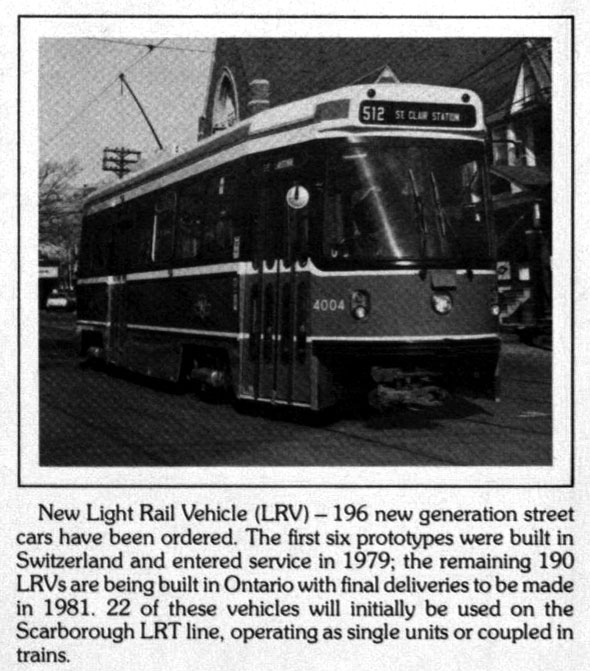
The 7-kilometre route borrowed space from an existing CN corridor from Eglinton Avenue E north to Ellesmere Road before making a sharp turn under the tracks to Midland Avenue then rising on to a concrete bridge to the yard at McCowan Road. A pamphlet issued at the time said this alignment would leave the line best placed for extension to Malvern.
At one time there was a proposal to build a similar streetcar line at the Kipling end
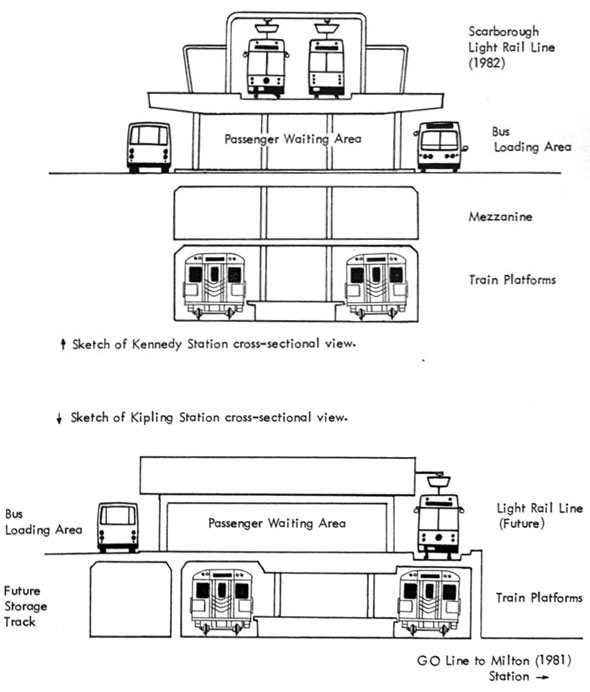
of the subway, too. As these things often go, the dormant track bed opposite the bus bays on the upper level of the station is the only portion of the project that was ever realized. Had it been completed, it would likely have served an area east of Pearson airport and used streetcars as well.
"The RT will change the image of Scarborough," local Mayor Gus Harris declared in 1985. "This will be Scarborough's yellow brick road," said Alderman Brian Ashton, Harris' former assistant.

As originally conceived and partially built the line would use chains of six CLRV streetcars, the ones currently in service Toronto today, in a setup similar the Boston Green Line. The streetcars were one of the latest creations of the Urban Transportation Development Corporation (UTDC), a crown corporation formed to build vehicles for an anticipated worldwide light rail boom.
As it happened, the CLRVs only ran in a six-car train once during a test circuit of the St. Clair Carhouse on 21 March, 1982. Luckily for us, TTC worker Ray Corley was on hand to capture the occasion for posterity.
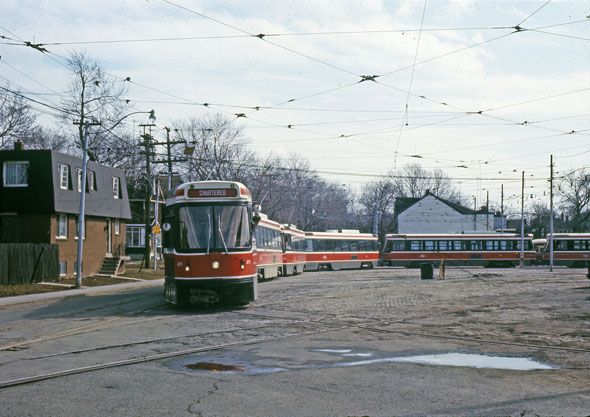
Unlike the ICTS vehicles the RT eventually adopted, the streetcars were unable to reverse and had to turn around in a large semi-circular curve. Although it's now out of use, the loop was built out the west end of Kennedy station above the kiss-and-rise area but it was only used for a short time due to problems getting the ICTS vehicles to make the tight curve.
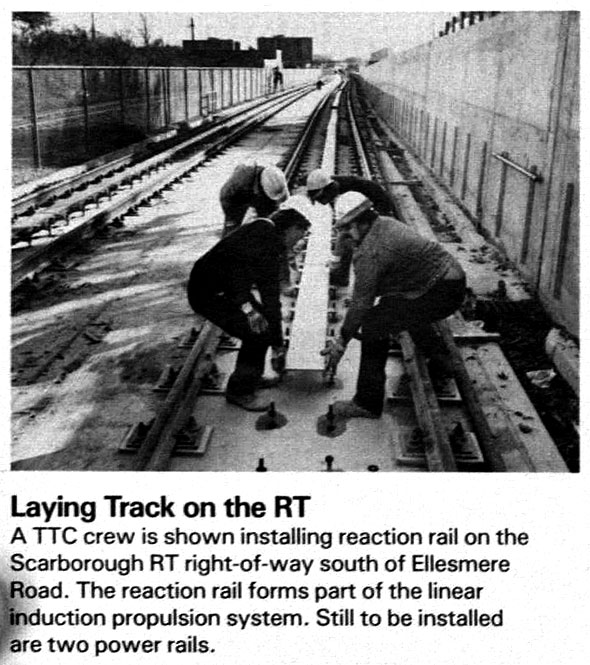
Work began on the line in October 1981 and the first of the 24 linear induction cars were delivered from Kingston, Ontario on April 17, 1984. The boxy white trains were the pride of the province's light rail program and, in the hope of attracting orders from other cities, the UTDC had convinced the TTC to switch out the streetcars.
It worked too, Vancouver and Detroit all bought in to the magnetic propulsion system and established their own rapid transit lines to mixed success. The welded aluminum cars cost $1.5 million each and could hold 100 people, 30 seated and 70 standing.
The motors, related to modern mag-lev and roller coaster technology, were capable of propelling the cars to a top speed of 72 km/h but with station stops the train typically averaged 32.5 km/h. A set of steering axles helped reduce rail grinding noise (the squealing heard when a subway train rounds a corner) and climate-controlled interiors promised a comfortable ride year round.
Interestingly (well, interesting for people like me,) the ubiquitous subway door chimes were first introduced to Toronto with the Scarborough RT.
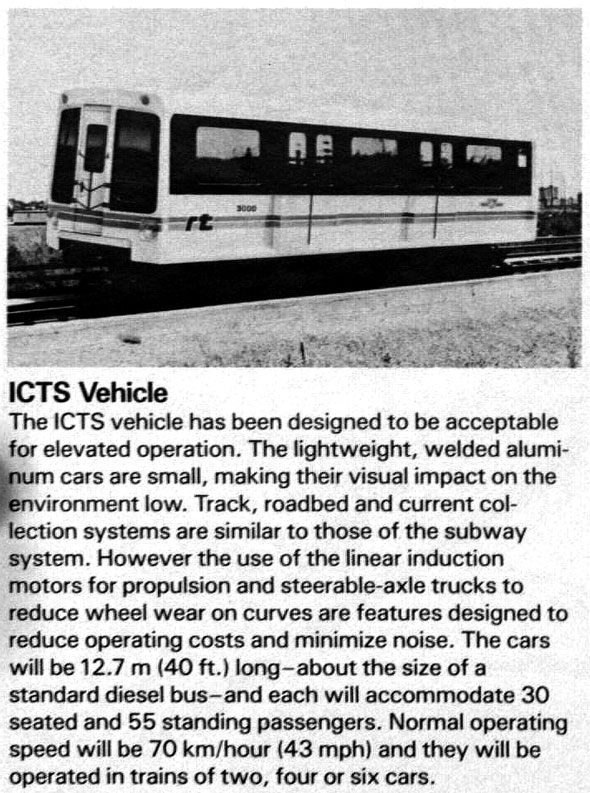
Toronto Sun writer Peter Howell called the brief computerized melody a "welcome change from the two piercing whistle blasts that signal a subway ride."It's hard to argue against the manufacturer's claim the trains were technologically advanced. Though there's an operator on every train to close the doors, monitor the track ahead, and ensure the safety of passengers, computers - 1980s computers, no less - do the rest.
Each vehicle has two on-board processors that accept commands from the central control station. Acceleration and braking points are calculated using speed and location data broadcast from antenna beneath the train to receivers along the route and relayed back to the remote driver.
Controllers in the central office also have control over de-icing systems and escalators via the SELTRAC software, a system developed in West Germany by Standard Elektrik Lorenz AG, now Alcatel-Lucent.
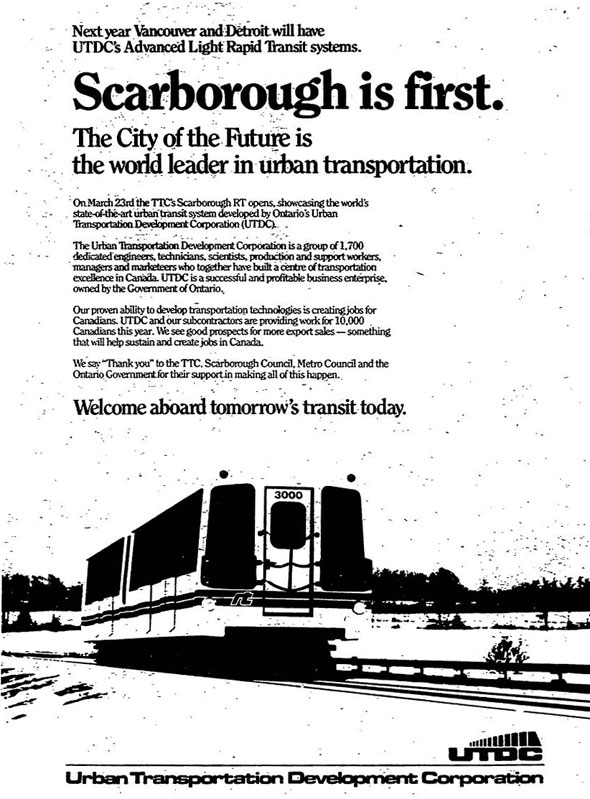
The $196 million RT opened on a crisp 23 March, 1985 with a day of free rides for passengers starting their journey on the line. In celebration, mayor Gus Harris proclaimed "City of the Future" week in Scarborough.
It was good timing. The first town of Scarborough in Yorkshire, England was celebrating the 500th anniversary of its town charter being issued by King Richard III in 1485 and their mayor was on hand to mark the arrival of the new transit line. More than 600 other dignitaries turned up to pose for the cameras.
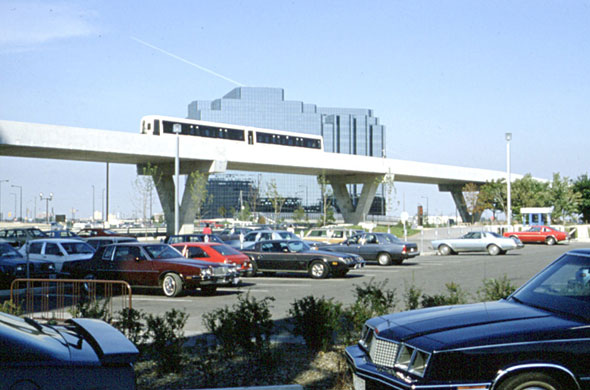
It wasn't all photo ops and sound bites, however. Several protestors, many in wheelchairs, protested the line's lack of elevators or access ramps on the RT. The ceremonial first train left Scarborough Centre for Kennedy and a champagne reception to the sound of music specially composed for the occasion, leaving the demonstrators behind.
"Can you imagine a wheelchair in the rush hour at Bloor and Yonge? That's why we have a parallel system for disabled with WheelTrans," said TTC GM Alf Savage, defending the lack of accessible stations. Former TTC chief Michael Warren was forced to deny calling disabled access "distasteful and inconvenient" as a protestor claimed on a placard.
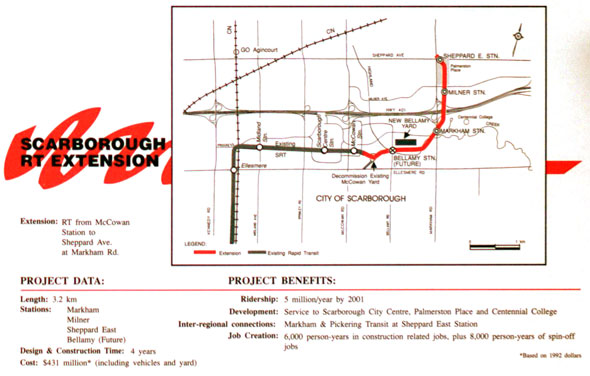
One planned expansion of the RT in 1993 called for 3.2 kms of new track and stations at Bellamy Road, Markham Road, Milner Avenue, and Sheppard East - a path similar to the cancelled LRT extension but with two extra stops. A new yard would have been built just north of the Bellamy station at a total cost of $430 million in 1992 money.
At the same time, the province pitched the Spadina line extension (similar to what's currently under-construction), the Sheppard subway, the Eglinton West subway, a westward stretch of Bloor-Danforth line to Sherway Gardens, and a Waterfront West LRT. All were to be finished by 2003.
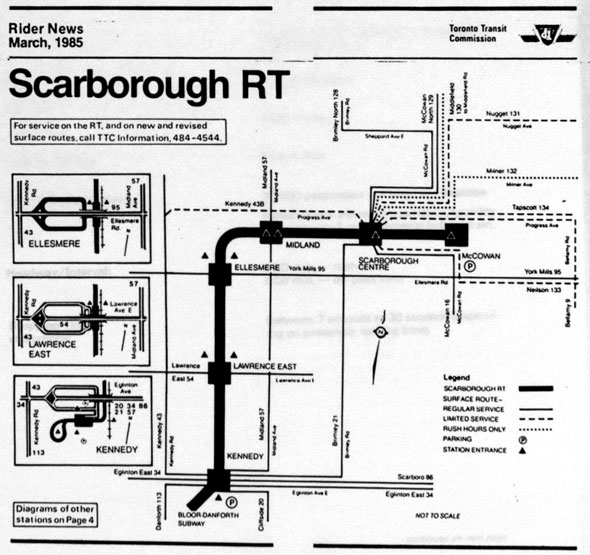
The Scarborough RT would struggle to achieve ridership projections. The promotional material claimed the line could handle up to 20,000 passengers an hour in trains of six tethered cars but the first estimates predicted about 3,000 passengers an hour in each direction. Today an average of 1,800 board every hour at Kennedy, the busiest station on the line.
The most recent figures available from the TTC estimate 40,000 people use the line each day, almost none of them boarding or alighting at Ellesmere, the quietest station on Toronto's subway map. For comparison, Bessarion, famously the quietest stop on the subway, sees double the number of riders.
Had it been approved, the LRT conversion of the would have kept the current alignment and largely followed the proposed expansion plan first proposed back in 1993. The subway, if it survives, will forge a new path up McCowan Road to Sheppard Avenue with fewer stops.
It's not clear whether light rail will remain in the east end beyond 2015 but, lacklustre ridership aside, Toronto should be reasonably pleased with its first taste of surface rapid transit.
MORE IMAGES:
Diagram showing the motors under the ICTS cars
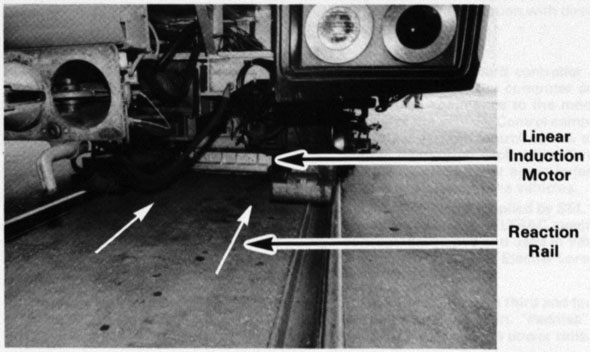
Introducing the RT logo
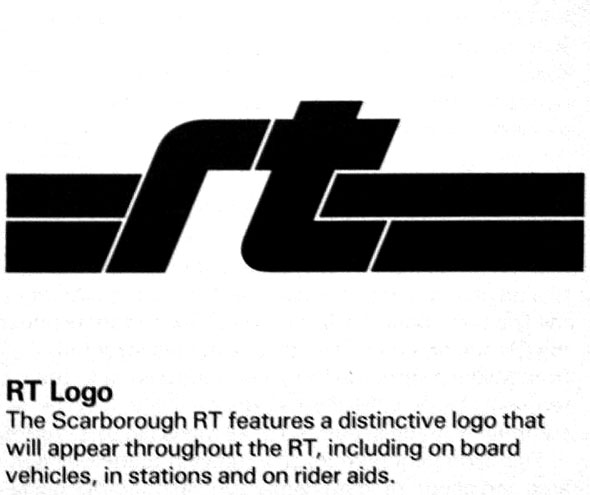
Map of the RT
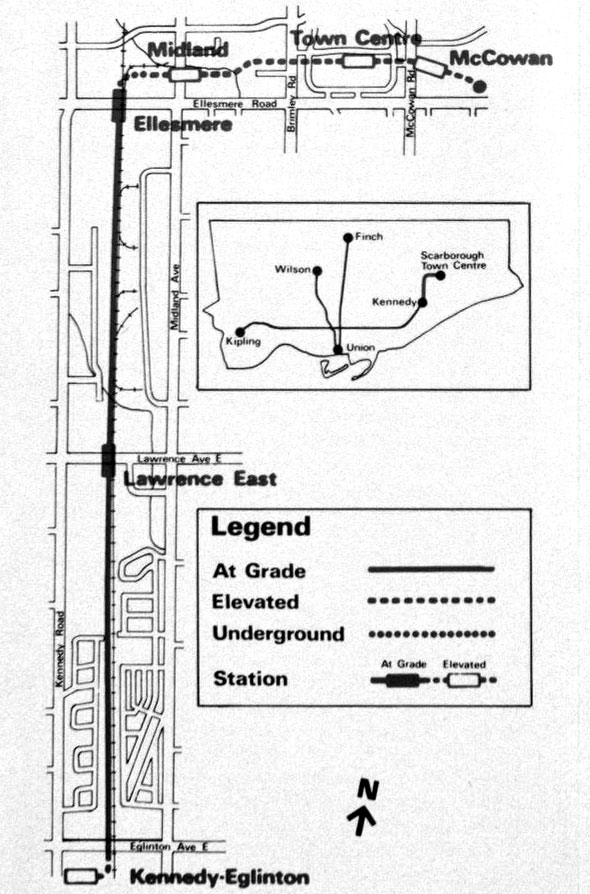
An early map labeling Kennedy and the RT as under-construction
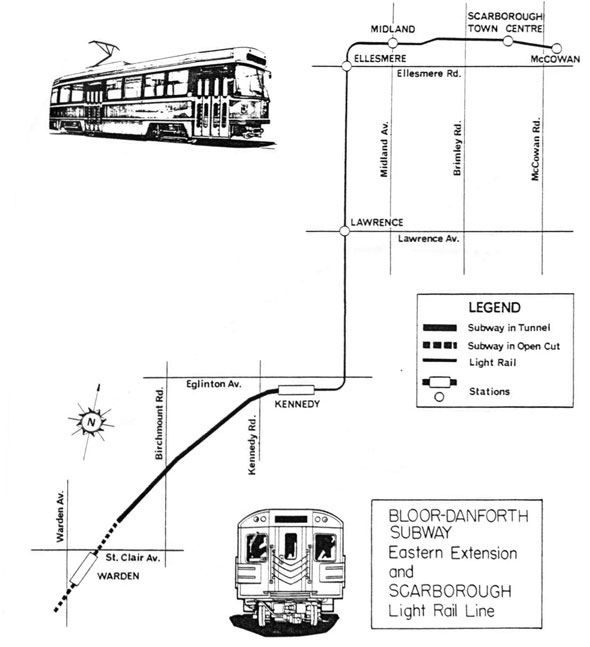
The cover of the first public progress report showing streetcars as the vehicle of choice
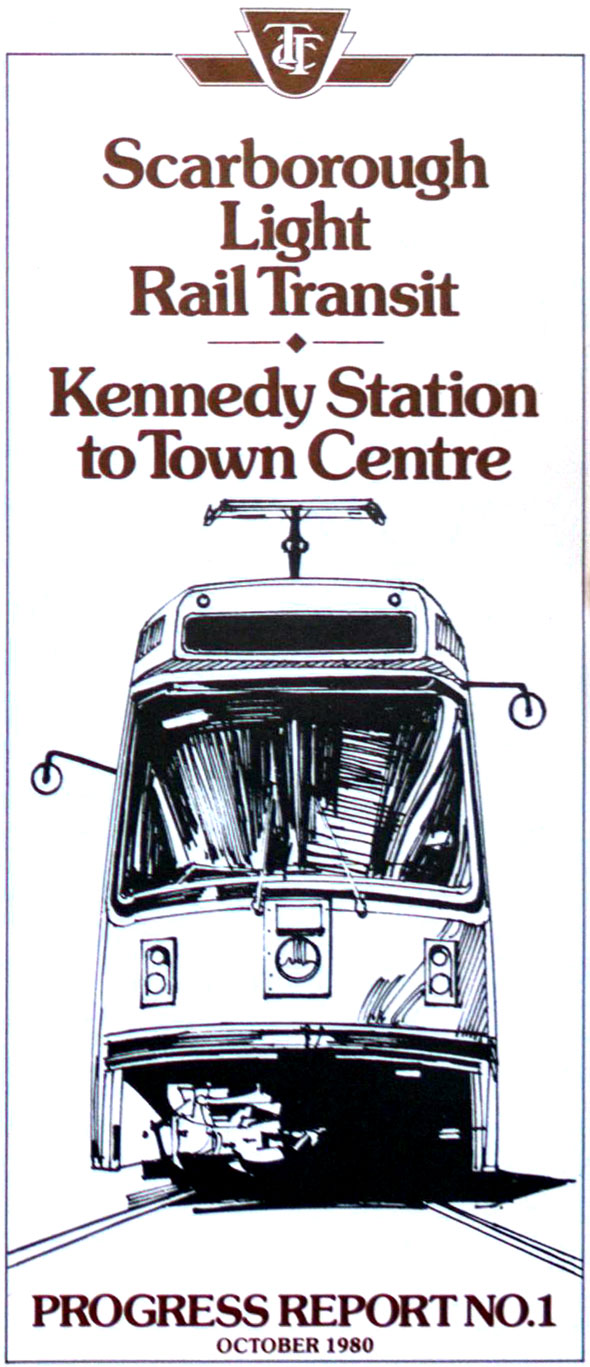
Chris Bateman is a staff writer at blogTO. Follow him on Twitter at @chrisbateman.
Image: Ray Corley, TTC Archives, Ontario Archives.
Latest Videos
Latest Videos
Join the conversation Load comments







